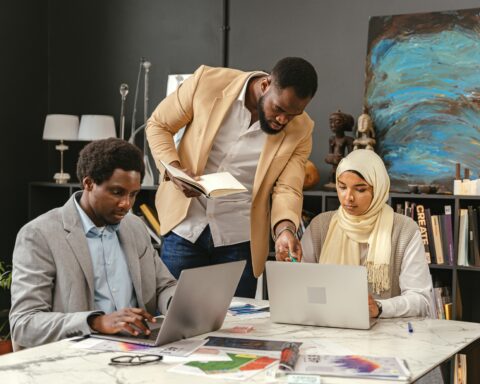Policy makers, journalists, professors and lawyers are putting their best ideas forward to find the right solution to tackle the problem of racial profiling in Ontario.
“We hear the term a lot,” says Renu Mandhane, chief commissioner of the Ontario Human Rights Commission (OHRC), about ‘racial profiling’. “Our job at the commission is to really come up with a concrete understanding of what that means across communities and to understand those experiences.”
The OHRC held a public lecture, in collaboration with Toronto’s York University, to discuss its policies and develop new strategies in combatting racial prejudice in a range of institutional and community settings.
Differing experiences
Speakers at the public lecture used their background and personal experiences to shed light on the issue of racial profiling. Each took the stage to present their views and encourage the community to take a stance against racial discrimination.
Islamophobia [is] a “disease” and “a social cancer eating away at our demographics.”
Keynote speaker at the event, Toronto Star columnist, Haroon Siddiqui, spoke on discrimination against Muslim people, calling Islamophobia a “disease” and “a social cancer eating away at our demographics.”
“It’s not an isolated phenomenon; it’s an unholy alliance of very unlikely partners,” said Siddiqui, author of the 2008 book Being Muslim. Islamophobia has become mainstream like other forms of discrimination, including anti-Semitism and homophobia, which people have come to condemn, he added.
According to Siddiqui, the damage of Islamophobia is the eroded self-confidence in Muslims and their democracies. “We are no longer confident that we can tackle the criminals, or build a war against terrorism,” explained Siddiqui. “We are just turning on each other.”
Keith Corston, chief of Chapleau Cree First Nation, added that racial profiling can be self-destructive to communities.
“Many of our young people made a conscious effort to be tough, which subsequently led to a lot of us ending up in jail and resorting to alcohol abuse,” he explained. “We always felt that we had to be better and tougher and defend one another. As a result, we missed out on our childhood.”
York professor, and former vice-chair of the Human Rights Tribunal of Ontario, Faisal Bhabha, spoke about the actions of police forces, calling the logic of profiling the same as that of the police state.
“It might appear to be effective,” he said. “While stereotypes sometimes do confirm actual attributes, there’s no way to know or assess the prevalence of correct or incorrect stereotyping. Profiling, even when it leads to correct results, is all a stab in the dark.”
Bhabha encouraged the audience to refrain from seeing racial profiling as an attempt to be ‘safe rather than sorry’, because “false promises of safety are just as dangerous as doing nothing at all.”
Resistance, response, reform, restore
According to Mandhane, the OHRC continues to work on several initiatives to bring topics of discrimination to the forefront.
“We are putting in submissions to the governments on their new draft regulations of carding and segregation,” she said. “We are bringing a race lens to the use of segregation in jails and prisons.”
“Racial profiling has damaged many lives – African-Canadian lives.”
Anthony Morgan, policy and research lawyer at the African Canadian Legal Clinic, presented a visual model of what social transformation could look like, using four key words – resistance, response, reform, restore. Morgan used past social movements to demonstrate how his module is applicable, including the 1992 Yonge Street riots.
In response to the riots, there was the release of the Stephen Lewis Report on Race Relations in Ontario and the creation of the Black Action Defence Committee (BADC) – steps Morgan deems a social response.
“We continue to go in the same circle,” Morgan said. “We’re not addressing the ultimate impacts that these systems have. Racial profiling has damaged many lives – African-Canadian lives.”
Morgan said the solution is looking at ways to “restore communities” while pointing to the word in the middle of his module.
“Restoration is about tackling and informing community members on how they choose to resist and respond to the government on [racial profiling].”
Important to continue the discussion
For newcomers, Siddiqui said the discussion on racial profiling shows that in Canada we want every citizen treated equally.
“If that’s what the law says, we need to implement that law,” he said. “Our constitution, our charter, our human rights legislation and our entire body of human rights sub-culture is important to Canadians.”
“If we’re going to fix a problem we have to recognize we have one.”
Morgan explained that new Canadians may not be familiar with the repercussions and tactics of racial profiling, but having an event like the public lecture can give them a sense of comfort.
“Sometimes you may feel like you’ve been treated differently, but you’re not quite sure,” he said. “Being in a space like this, says that it is part of a larger language in which some people end up being treated [differently] because of their ethnicity.”
Chief Corston summarized the importance of the community discussion of racial profiling by stating it leads back to education.
“If we’re going to fix a problem we have to recognize we have one,” he stated. “It’s not about blame, it’s about learning the history of wrongdoing and the history of bringing down people.”
Mandhane stressed the importance of dialogue in moving beyond the surface of racial profiling to create a policy that can guide institutions in solving the problem.
“Actually meeting and speaking with people, hearing their experiences, it’s the whole reason we do the work,” she said. “If, in the short term, that doesn’t result in the sorts of changes we want, you have to believe that you’re in for the long haul if you’re interested in systemic discrimination.”





